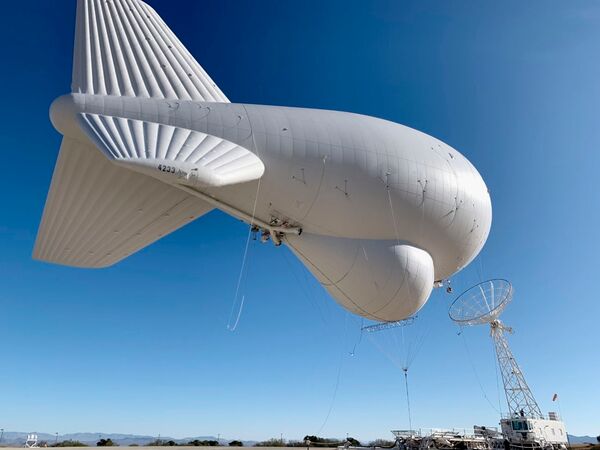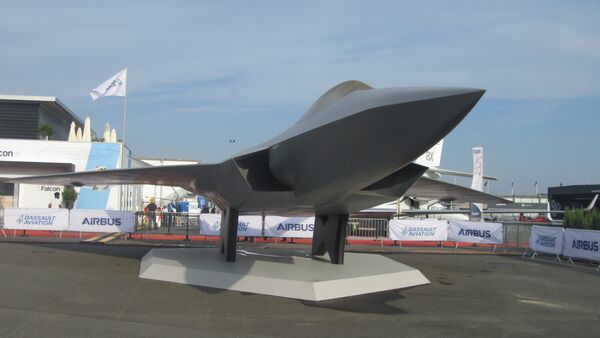- About
- Intara
- Capabilities
- Advisory
- Resources
- News
- Store
US approves USD1.2 billion aerostat sale to Poland
09 February 2024
by Olivia Savage


Poland has requested a minimum of four aerostat systems to support the detection and monitoring of air and ground threats, including UAVs. The US currently deploys Tethered Aerostat Radar Systems (pictured) to support airborne border surveillance along the US Mexico border and select Caribbean areas. (US Air Force photo by GS-11 Deb H; USA) (US DoD)
The US State Department has approved a possible sale of Airspace and Surface Radar Reconnaissance (ASRR) aerostat systems to Poland on 7 February for an estimated USD1.2 billion.
According to an announcement by the US Defense Security Cooperation Agency (DSCA), the sale comprises ASRR, airborne early warning (AEW) radars with identification friend-or-foe (IFF) capabilities, electronic sensor systems, mooring systems with powered tether and embedded fibre optics, and ground control systems (GCS) as well as associated hardware, training, technical, and logistical support.
Poland intends to use the capability as an AEW system to defend against incoming regional threats, the announcement detailed.
Raytheon Intelligence & Space, ELTA North America, and Avantus Federal LLC will be the primary contractors.
Modern Day Marine 2024: Kaman's Kargo enters flight-testing
01 May 2024
by Zach Rosenberg


The first Kaman Kargo in flight-testing at an undisclosed Pennsylvania site. (Kaman)
Kaman's Kargo medium-lift unmanned aerial vehicle (UAV) has been in flight-testing since December 2023, the company's general manager, Romin Dasmalchi, told Janes in advance of Modern Day Marine on 24 April.
The UAV first flew while tethered to the ground for safety reasons. The tether has since been removed, Dasmalchi said, and the first Kargo is free-flying at an undisclosed UAV testing site in Pennsylvania.
Following a flight, Dasmalchi said, “You would make an adjustment – call it a tuning adjustment – and then you fly it for a short period. You give it some inputs manually to see how it handles, then you land and you make adjustments. We probably did hundreds of those evolutions.” The Kargo might undergo 20 to 30 flights per day.
As of 26 April the first Kargo craft had accrued around 50 hours of flight time, Dasmalchi said, and hundreds of ignitions of its Rolls-Royce RR300 engine. Aside from changes to antenna placement, Dasmalchi anticipated no major changes to Kargos in production based on the results of flight-testing to date.
US Air Force awards Sierra Nevada Corporation contract to build Survivable Airborne Operations Center
30 April 2024
by Zach Rosenberg


One of four Boeing E-4Bs, which SAOC is intended to replace. (US Air Force)
The US Air Force (USAF) awarded Sierra Nevada Corporation (SNC) a USD13 billion contract to build the Survivable Airborne Operations Center (SAOC), intended to replace the Boeing E-4B Nightwatch as the service's airborne nuclear command-and-control aircraft and primary transport for the secretary of defence. The contract was announced on 26 April, and is set to run through July 2036.
The contract covers ground support systems, including mission trainers, maintenance trainers, and system integration laboratories, among other necessary equipment.
“To satisfy operational requirements, the weapon system will be comprised of a commercial derivative aircraft that will be hardened and modified to meet military requirements,” said the USAF in the contract announcement. “Additionally, the mission system will integrate secure communications and planning capabilities on modern information technology, infrastructure, based on a Modular Open System Approach (MOSA).”
The number and type of aircraft included in the contract are publicly undisclosed, but the USAF currently operates four E-4Bs, which entered service in 1980 according to Janes C4ISR & Mission Systems: Air and are approaching the end of their service lives.
Belgium becomes FCAS/SCAF observer country
29 April 2024
by Gareth Jennings


A full-scale mock-up of the New Generation Fighter that sits at the core of the FCAS/SCAF project of which Belgium is now an official observer. (Janes/Gareth Jennings)
Belgium has joined France, Germany, and Spain in the Future Combat Air System (FCAS)/Système de Combat Aérien du Futur (SCAF) programme, with the Belgian government saying the country now has observer status.
Defence Minister Ludivine Dedonder and Deputy Prime Minister and Minister of Economy and Labour Pierre-Yves Dermagne announced the news in a joint communiqué released on 26 April.
“On 24 April the government obtained observer country status for Belgium as part of the FCAS/SCAF development programme,” the communiqué said.
As detailed in the announcement, the observer country status will afford Belgium access to information on the programme and its development, and will be able to participate in strategic discussions. “This will allow Belgium to get a clear idea of the programme and its implications for the Belgian defence industry,” the ministers said.
The US State Department has approved a possible sale of Airspace and Surface Radar Reconnaissance (A...
Latest Podcasts
Iran Israel analysis
In this podcast Janes analysts discuss the Iranian attacks on Israel on the 14 April. They highlight the military systems used by Iran and the performance and impact of these on Israel. They also discuss the implications of this attack goi...
Listen nowJanes Case Studies
Using Janes Intara to build a common intelligence picture: Russian build up on the Ukrainian border
View Case StudyNews Categories
 Air Details
Air Details